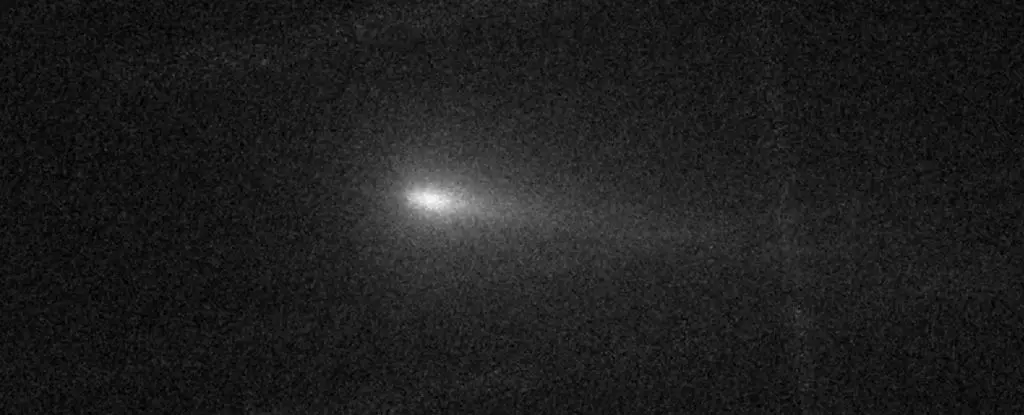In a remarkable turn of events, the comet C/2024 S1, initially anticipated to illuminate the night sky during Halloween, appears to be breaking apart as it approaches the Sun. This Kreutz sungrazer comet, discovered on September 27, was expected to make a close pass at a mere 1.2 million kilometers (about 750,000 miles) from the Sun on October 28, 2024. However, what was seen as a potential spectacle has quickly morphed into a cause for concern among astronomers, as observations indicate the comet’s disintegration.
When C/2024 S1 was first discovered, it captured the imagination of both scientists and amateur skywatchers alike. The comet’s predicted brightness, potentially outshining Venus, had many eagerly anticipating its appearance. Yet, despite early signs of brightness spurred by outburst activity—sudden increases in luminosity due to the expulsion of dust and gas—the comet’s brightness has dwindled sharply in recent observations. Photographs taken throughout October indicate that the comet’s nucleus is disappearing, leaving uncertainty in its wake.
This outcome, while disappointing, is not entirely unforeseen. Comets like C/2024 S1 are notorious for their fragility and instability during perihelion—the point in their orbits where they come nearest to the Sun. Observations of other Kreutz comets have shown similar behaviours, where stresses from increasing solar radiation lead to fragmentation. Therefore, what is unfolding is part of a larger narrative of cosmic phenomena, revealing both the beauty and vulnerability of these celestial objects.
Scientists have long sought to understand the mechanics behind a comet’s lifecycle, particularly the processes leading to disintegration. As these icy bodies journey through the Solar System, they are exposed to increasing thermal stress as they near the Sun. One proposed explanation is that the sublimation of ices within the comet allows gas and dust to escape, subsequently pushing the comet’s nucleus into a spin, which may increase centrifugal force to the point of fragmentation.
This theory is supported by historical precedents, such as the case of Comet C/2019 Y4 in 2020, which was observed disintegrating as it approached the Sun. Similar events have provided a unique window into the dynamic processes that govern these comets, though they leave researchers with more questions than answers. Understanding these mechanisms can aid scientists in anticipating the behaviours of other comets in the future, helping to distinguish between those likely to survive and those that are fated to break apart.
What Lies Ahead for C/2024 S1?
The ongoing disintegration of C/2024 S1 raises questions about its possible visibility in the approaching weeks. Predictions suggested that this comet could have rivaled Venus in brightness, making it possible to see even during daylight. However, with the potential fragmentation looming over it, the comet’s fate remains uncertain. Should a substantial piece of the comet’s nucleus survive the disintegration, observers might still see a display, albeit less impressive than initially forecasted.
Additionally, the tail of dust and gas ejected from the comet could linger in the night sky, providing fleeting glimpses for amateur astronomers equipped with binoculars or small telescopes, especially in the Southern Hemisphere. After perihelion, the potential for visibility in the Northern Hemisphere remains, depending on the comet’s state after its encounter with the Sun.
Interestingly, C/2024 S1 is not merely an isolated entity; it is derived from a larger cosmic tapestry. All Kreutz sungrazers are believed to originate from a single catastrophic event involving the Great Comet of 1106 CE. As this previous giant broke apart, it left a trail of smaller comets in its wake, which includes not only C/2024 S1 but also the renowned Comet Ikeya-Seki, which graced the skies in 1965.
The adventure of C/2024 S1 serves as a reminder of the transient nature of comets and the mysteries they hold. As we anticipate the next chapter in this celestial tale, we are left with the thrill of inquiry, and perhaps, the potential for glimpses of beauty in the vastness of space. Those with an eye for the night sky will surely be keeping a watchful gaze, hoping to catch a glimpse of what remains of this fleeting visitor. Happy star-gazing!


Leave a Reply